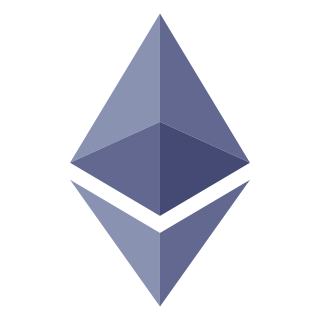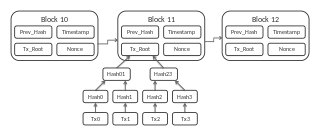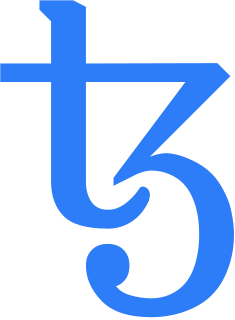Proof of work (PoW) is a form of cryptographic zero-knowledge proof in which one party proves to others that a certain amount of a specific computational effort has been expended. Verifiers can subsequently confirm this expenditure with minimal effort on their part. The concept was invented by Cynthia Dwork and Moni Naor in 1993 as a way to deter denial-of-service attacks and other service abuses such as spam on a network by requiring some work from a service requester, usually meaning processing time by a computer. The term "proof of work" was first coined and formalized in a 1999 paper by Markus Jakobsson and Ari Juels. Proof of work was later popularized by Bitcoin as a foundation for consensus in permissionless blockchains and cryptocurrencies, in which miners compete to append blocks and mint new currency, each miner experiencing a success probability proportional to their computational effort expended. PoW and PoS are the two best known Sybil deterrence mechanisms. In the context of cryptocurrencies they are the most common mechanisms.
In cryptography, a verifiable random function (VRF) is a public-key pseudorandom function that provides proofs that its outputs were calculated correctly. The owner of the secret key can compute the function value as well as an associated proof for any input value. Everyone else, using the proof and the associated public key, can check that this value was indeed calculated correctly, yet this information cannot be used to find the secret key.
A smart contract is a computer program or a transaction protocol which is intended to automatically execute, control or document legally relevant events and actions according to the terms of a contract or an agreement. The objectives of smart contracts are the reduction of need in trusted intermediators, arbitrations and enforcement costs, fraud losses, as well as the reduction of malicious and accidental exceptions.
Proof of stake (PoS) protocols are a class of consensus mechanisms for blockchains that work by selecting validators in proportion to their quantity of holdings in the associated cryptocurrency. Unlike a proof of work (PoW) protocol, PoS systems do not incentivize extreme amounts of energy consumption. The first functioning use of PoS for cryptocurrency was Peercoin in 2012. The biggest proof-of-stake blockchain by market capitalization is Cardano.

Ethereum is a decentralized, open-source blockchain with smart contract functionality. Ether is the native cryptocurrency of the platform. Amongst cryptocurrencies, Ether is second only to Bitcoin in market capitalization.

NXT is an open source cryptocurrency and payment network launched in 2013 by anonymous software developer BCNext. It uses proof-of-stake to reach consensus for transactions—as such there is a static money supply. Unlike Bitcoin, there is no mining. NXT was specifically conceived as a flexible platform around build applications and financial services, and serves as basis for ARDR (Ardor), a blockchain-as-a-service multi-chain platform developed by Jelurida, and IoTeX (cryptocurrency) the current steward of Nxt as of 2021. NXT has been covered extensively in the "Call for Evidence" report by ESMA.

A blockchain is a growing list of records, called blocks, that are linked together using cryptography. It's also described as a "trustless and fully decentralized peer-to-peer immutable data storage" that is spread over a network of participants often referred to as nodes. Each block contains a cryptographic hash of the previous block, a timestamp, and transaction data. The timestamp proves that the transaction data existed when the block was published in order to get into its hash. As blocks each contain information about the block previous to it, they form a chain, with each additional block reinforcing the ones before it. Therefore, blockchains are resistant to modification of their data because once recorded, the data in any given block cannot be altered retroactively without altering all subsequent blocks.
Hyperledger is an umbrella project of open source blockchains and related tools, started in December 2015 by the Linux Foundation, and has received contributions from IBM, Intel and SAP Ariba, to support the collaborative development of blockchain-based distributed ledgers.
Proof of space (PoS) is a type of consensus algorithm achieved by demonstrating one's legitimate interest in a service by allocating a non-trivial amount of memory or disk space to solve a challenge presented by the service provider. The concept was formulated in 2013 by Dziembowski et al. and by Ateniese et al..

Firo, formerly known as Zcoin, is a cryptocurrency aimed at using cryptography to provide better privacy for its users compared to other cryptocurrencies such as Bitcoin.
Cardano is a public blockchain platform. It is open-source and decentralized, with consensus achieved using proof of stake. It can facilitate peer-to-peer transactions with its internal cryptocurrency, Ada.

Neo is an open-source decentralized blockchain decentralized application platform founded in 2014 by Da HongFei and Erik Zhang. Since its rebranding to Neo from Antshares in 2017, the project's vision is to realize a "smart economy" by utilizing blockchain technology and smart contracts to issue and manage digitized assets.
A non-fungible token (NFT) is a unique and non-interchangeable unit of data stored on a digital ledger (blockchain). NFTs can be used to represent easily-reproducible items such as photos, videos, audio, and other types of digital files as unique items, and use blockchain technology to establish a verified and public proof of ownership. Copies of the original file are not restricted to the owner of the NFT, and can be copied and shared like any file. The lack of interchangeability (fungibility) distinguishes NFTs from blockchain cryptocurrencies, such as Bitcoin.
A blockchain is a shared database that records transactions between two parties in an immutable ledger. Blockchains document and confirm pseudonymous ownership of all existing coins within a cryptocurrency ecosystem at any given time through cryptography. After a transaction is validated and cryptographically verified by other participants or nodes in the network, it is made into a "block" on the blockchain. A block contains information about the time the transaction occurred, previous transactions, and details about the transaction. Once recorded as a block, transactions are ordered chronologically and cannot be altered. This technology rose to popularity after the creation of Bitcoin, the first application of blockchain technology, which has since catalyzed other cryptocurrencies and applications.

Tezos is a decentralized, open-source proof of stake blockchain network that can execute peer-to-peer transactions and serve as a platform for deploying smart contracts. The native cryptocurrency for the Tezos blockchain is the tez which has the symbol XTZ. As of August 2021, there are about 400 block validating nodes on the Tezos network.

TRON is a decentralized, open-source blockchain-based operating system with smart contract functionality, proof-of-stake principles as its consensus algorithm and a cryptocurrency native to the system, known as Tronix (TRX). TRON was established in March 2014 by Justin Sun, former chief representative and advisor for Ripple in Greater China and current CEO of TRON Fondation and Rainberry. He is also the founder and current CEO of mobile social app Peiwo. The development of the project is overseen and supervised by the TRON Foundation since 2017, a non-profit organization which based in Singapore and was established in the same year. It is originally an Ethereum-based ERC-20 token, which switched its protocol to its own blockchain in 2018.
Bancor Protocol is a standard for decentralized exchange networks used to allow for the automated conversion of cryptocurrency tokens into other tokens, including across blockchains, without the need for an order book or counterparty to facilitate the exchange. Bancor invented the world’s first blockchain-based automated liquidity pool, or automated market maker (AMM) called a Smart Token, a digital currency with an embedded converter that allows it to be issued or exchanged automatically for any token in its network. Bancor Network consists of all the different tokens utilizing the Bancor Protocol and connected through BNT, the Bancor Network Token, which serves as the hub token for the network through which any token can be converted into any other token.
Decentralized Finance is a blockchain-based form of finance that does not rely on central financial intermediaries such as brokerages, exchanges, or banks to offer traditional financial instruments, and instead utilizes smart contracts on blockchains, the most common being Ethereum. DeFi platforms allow people to lend or borrow funds from others, speculate on price movements on a range of assets using derivatives, trade cryptocurrencies, insure against risks, and earn interest in savings-like accounts. DeFi uses a layered architecture and highly composable building blocks. Some DeFi applications promote high interest rates but are subject to high risk. By October 2020, over $11 billion was deposited in various decentralized finance protocols, which represented more than a tenfold growth during the course of 2020. As of January 2021, approximately $20.5 billion was invested in DeFi.
Solana is a public blockchain platform. It is open-source and decentralized, with consensus achieved using proof of stake and proof of history. Its internal cryptocurrency is SOL. Bloomberg considers Solana to be "a potential long-term rival for Ethereum". Like Ethereum, Solana can interact with smart contracts.
Proof of identity (PoID) is a consensus protocol for permission-less blockchains, in which each uniquely identified individual receives one equal unit of voting power and associated rewards. The protocol is based on biometric identification, humanity identification parties and additional verification parties.






